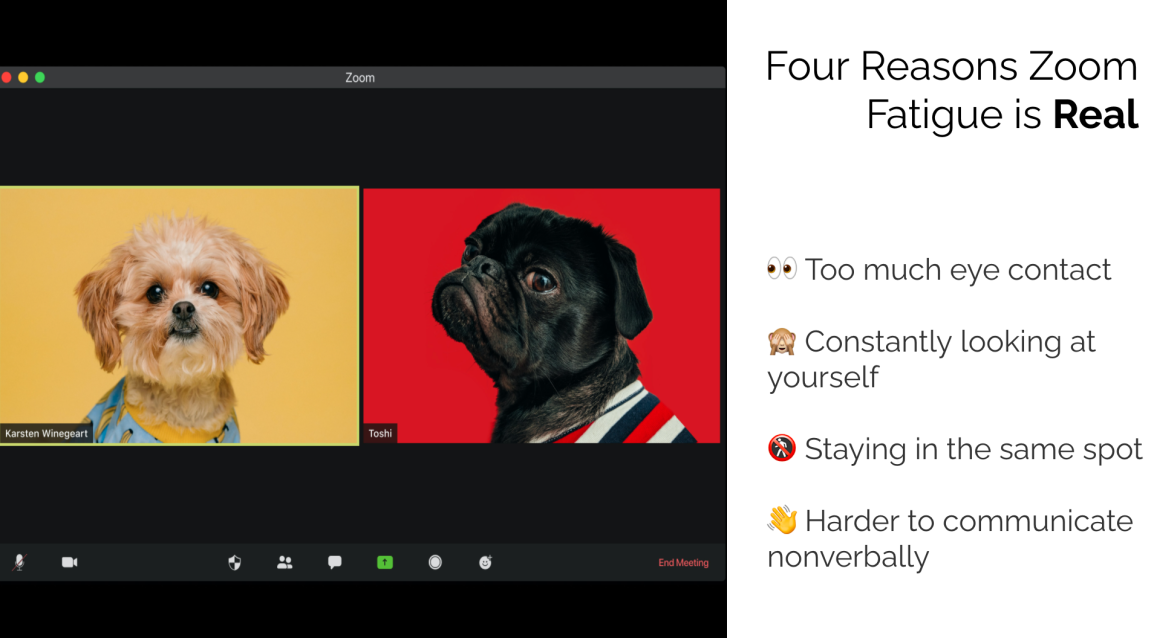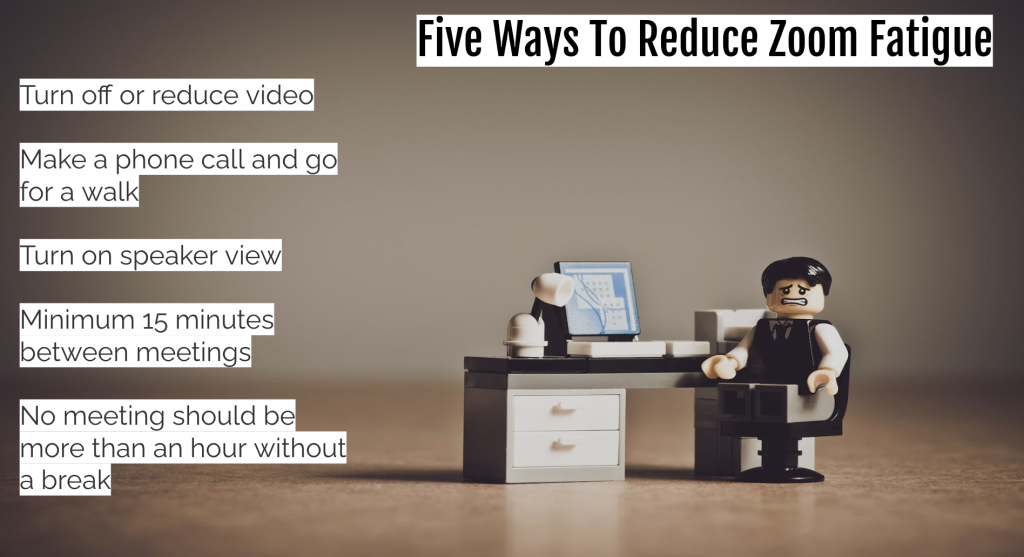“Imagine in the physical workplace, for the entirety of an 8-hr workday, an assistant followed you around with a handheld mirror, and for every single task you did and every conversation you had, they made sure you could see your own face in that mirror — Jeremy N. Bailenson; Nonverbal Overload: A Theoretical Argument for the Causes of Zoom Fatigue
Twelve months into the great remote work experiment, where do we stand?
A recent report from Steelcase which surveyed 32,000 people globally makes the bold claim that 95% of remote workers say they’d rather be back in the office in some capacity. Only 19% say they’re completely satisfied with their current work from home arrangements. More than half want to cap their remote work time to one or two days a week.

I don’t completely buy that, and suspect most would want to cap their office time to one or two days a week. Steelcase is a company that manufactures office furniture and clearly have a vested interest to declare. That said there is a lot of value in the report- particularly the findings that people’s experience varies significantly based on their circumstances and work ‘persona’.
As we emerge from our various lockdowns the model that appears to be gaining traction is that of the hybrid workplace.
Nearly a quarter of all businesses say they will continue to work in the office as the primary destination.
However, the majority of organisations will take a hybrid approach to work, in which employees work from home, the office, and elsewhere.

Clearly then for the majority of us technology will continue to play a defining role in our worklife experience.
The Productivity Paradox
There were clear signals long before the pandemic that technology often just makes it easier for us to be busy fools.
As Edward Tenner put it, technology ‘bites back’. What it gives us in efficiency, it takes away by giving us more overall work to do. Cal Newport whilst researching his new book illustrates it using the example of email. “In 2005, we were sending and receiving 50 emails a day. In 2006 this jumped to 69. By 2011 it was 90. Today we send and receive an estimated 126 messages, checking our inboxes once every 6 minutes on average.”
This is the productivity paradox of today – where growth in established economies is minimal compared to the speed of technology adoption. As Cal says – it seems clear that technological innovations aimed to make communication faster and more ubiquitous have clearly failed to boost our aggregate ability to actually get things done
Zoom Fatigue: “Everyone is staring at you, all of the time”
One fairly consistent feeling among people I know across different industries and age groups is a kind of exhaustion at the end of the workday. This seems counter-intuitive given we haven’t had to commute or rush from meeting to meeting, physically at least.
Jeremy Bailenson, founding director of the Virtual Human Interaction Lab at Stanford University has spent more than two decades studying the ways virtual communication affects individuals. At the beginning of the pandemic he wrote an article suggesting that the fatigue we get from video conferencing could be due to a kind of cognitive overload that occurs when we substitute in-person interactions for virtual platforms.
Now he has published a paper which explains the phenomenon of “Zoom fatigue” and its four causes: an excessive amount of close-up eye gaze, the effect of video on cognitive load, the increased self-evaluation from staring at video of yourself and the constraints of physical mobility.
The paper is fascinating and I’d recommend any remote/hybrid worker reads it, particularly if you lead teams. It outlines how quickly our behaviour has changed. Indeed behaviour “ordinarily reserved for close relationships—such as long stretches of direct eye gaze and faces seen close up—has suddenly become the way we interact with casual acquaintances, coworkers, and even strangers.”
One of the other emerging impacts of videoconferencing is the effect of your own reflection constantly staring back at you from the screen. For decades researchers have investigated the effect of seeing ourselves in a mirror and its role in self image/perception. Bailenson points out most prior mirror-image research has only focused on fleeting glances at ourselves, not the effect at gazing at ourselves for hours on end.
“There is no data on the effects of viewing oneself for many hours per day,” he writes. “Given past work, it is likely that a constant mirror on Zoom causes self-evaluation and negative affect.”
The suggestions in the research for reducing fatigue are common sense , but arguably this is the problem. Many of us know that the behaviours we are adopting are bad for us – we just aren’t listening to what our brains and bodies are telling us.
We know we spend too much time staring at screens.
We know that meetings, especially back to back ones, are corrosive to mind and body.
We know we should move , or stand, for 15 minutes in an hour unless we want a lot of problems in later life.
We know there’s a better way.

Looking Beyond Technology
The issue here is that instead of taking the initiative and setting some rules for the new world of work we wait for the technologists to solve the problem for us. The only response from Silicon Valley will be to make the tools faster, ‘smarter’ and give us more of them.
As Cal Newport points out the solutions will not emerge on their own. We need to start experimenting and finding out what works for our varied teams.
Ironically what we are missing from meetings is the things that happened between meetings: the random human connection, the physical chemistry, the overheard conversations.
Technology has helped us immensely over the past year. The lockdowns have only been possible because of technology. But algorithms only go so far and are rarely designed to the encourage the accidental collisions that lead to innovation. That feeling of running into someone, asking what they’re doing, and exchanging ideas. ‘The magic that’s sparked by serendipity’ as Steve Jobs described it.
Do we really think any tool or app is ever going to recreate that?
Related: Why Do We Believe In Silver Bullet Solutions?
Lego image by www_slon_pics from Pixabay


